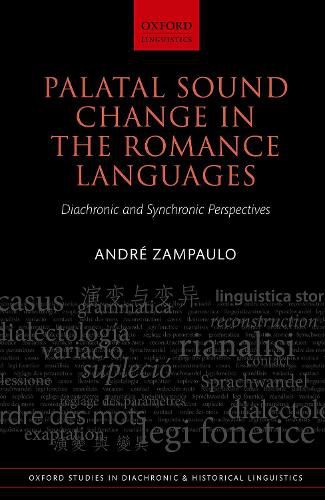Readings Newsletter
Become a Readings Member to make your shopping experience even easier.
Sign in or sign up for free!
You’re not far away from qualifying for FREE standard shipping within Australia
You’ve qualified for FREE standard shipping within Australia
The cart is loading…






This book presents a thorough investigation of the main diachronic changes that have taken place in the palatal sounds of the Romance languages, as well as their current patterns of synchronic variation. Andre Zampaulo draws on extensive data not only from diachronic sources, but also from a range of current phonetic, phonological, and dialectal studies to motivate a formal, constraint-based account of palatal sound change. The analysis takes into account the role of phonetic information in the shaping of phonological patterns, approaching sound change from its inception during the speaker-listener interaction and formalizing it as the difference in constraint ranking between the grammar of the speaker and that of the listener-turned-speaker. The volume offers insights into how and why similar types of change may take place in different varieties and/or the same language at different times, and will be of interest to graduate students and researchers in historical linguistics, phonetics and phonology, Romance linguistics, and dialectology more broadly.
$9.00 standard shipping within Australia
FREE standard shipping within Australia for orders over $100.00
Express & International shipping calculated at checkout
This book presents a thorough investigation of the main diachronic changes that have taken place in the palatal sounds of the Romance languages, as well as their current patterns of synchronic variation. Andre Zampaulo draws on extensive data not only from diachronic sources, but also from a range of current phonetic, phonological, and dialectal studies to motivate a formal, constraint-based account of palatal sound change. The analysis takes into account the role of phonetic information in the shaping of phonological patterns, approaching sound change from its inception during the speaker-listener interaction and formalizing it as the difference in constraint ranking between the grammar of the speaker and that of the listener-turned-speaker. The volume offers insights into how and why similar types of change may take place in different varieties and/or the same language at different times, and will be of interest to graduate students and researchers in historical linguistics, phonetics and phonology, Romance linguistics, and dialectology more broadly.